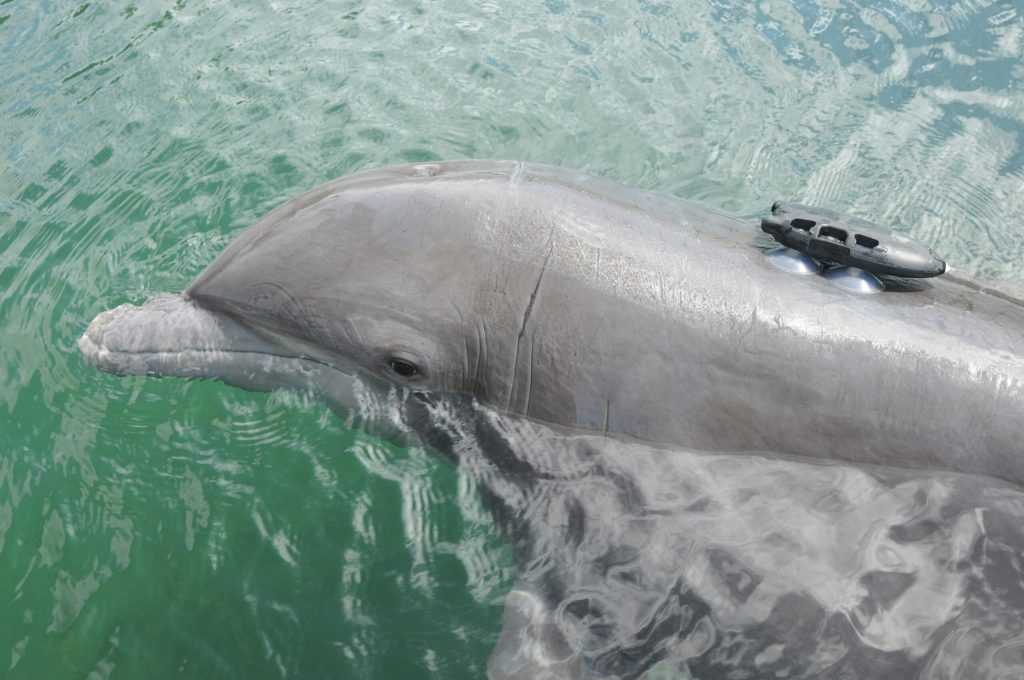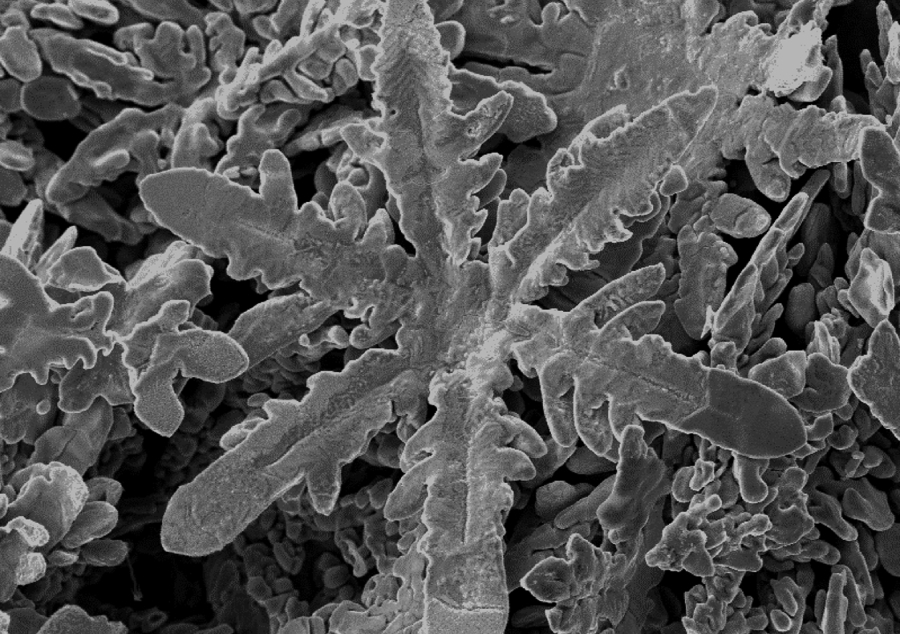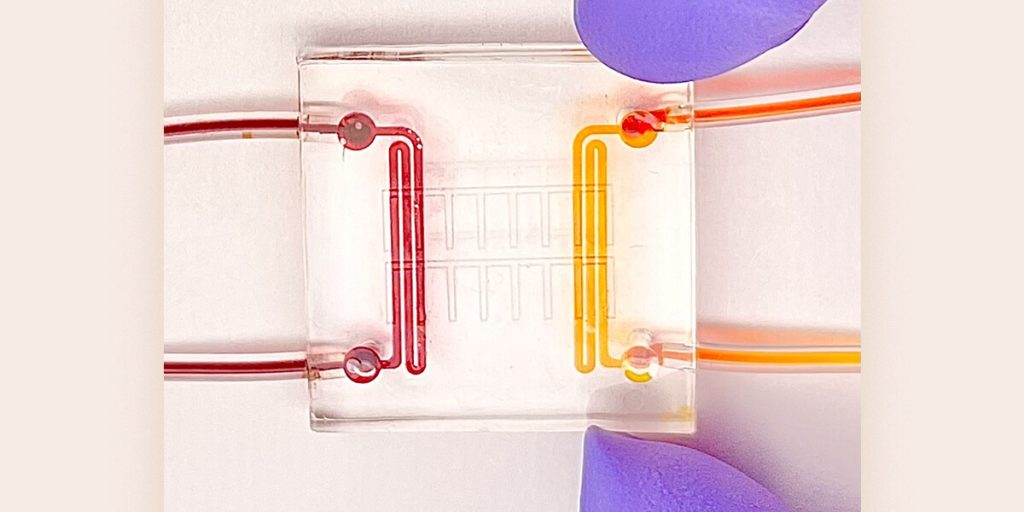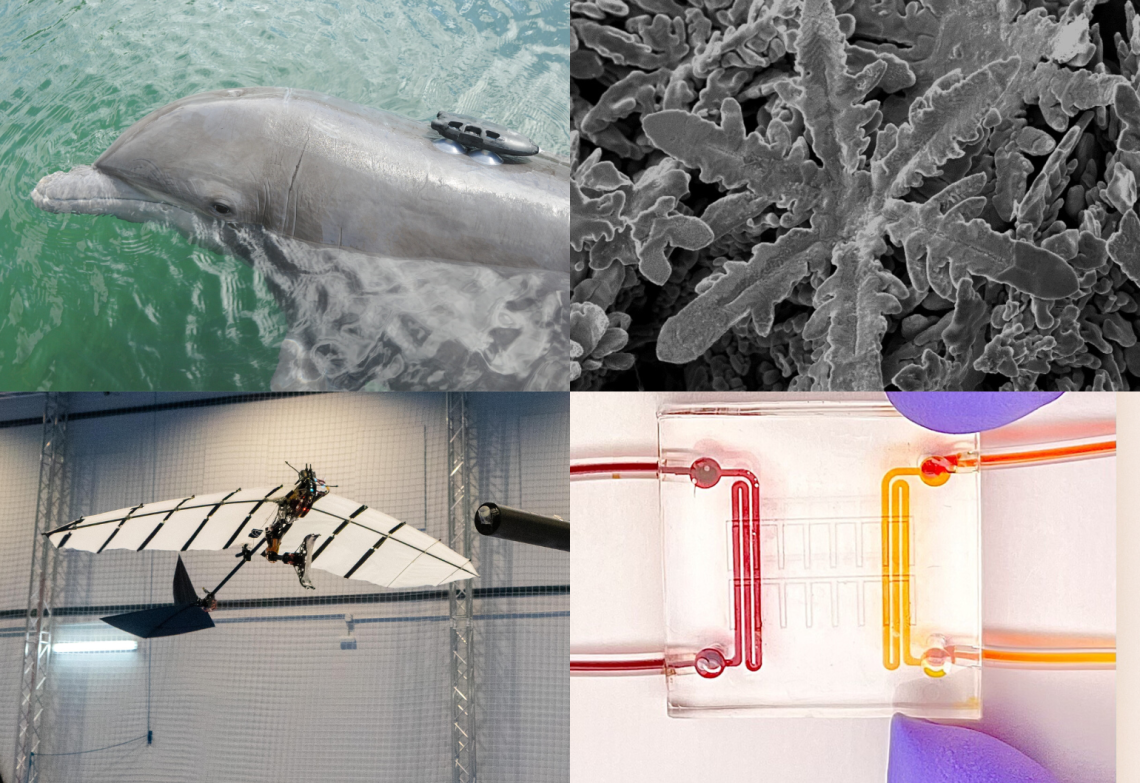Engineers from around the world are looking to nature — dolphins, birds and snowflakes — for these innovations.
1. Dolphin tracker

Researchers at the University of Michigan have created a biologging tag that can be used to record data about dolphin activities. Like a fitness tracker for cetaceans, the wearable sensor attaches to a dolphin and collects information about the creature’s energy use.
“Our goal is to use tag data to estimate foraging events, how many fish were consumed during a day, and connect that to estimates of how much energy dolphins use during the movement required to catch those fish,” said University of Michigan Assistant Professor of Mechanical Engineering Alex Shorter.
“This is important for conservation because we can then use our approach to estimate energetic costs when these animals are disturbed.”
Attached with suction cups between a dolphin’s blowhole and dorsal fin, the tag collects information about speed, temperature, pressure and movement, along with the sounds the animal produces and hears.
2. Zinc “snowflake”

A technique developed at the University of New South Wales’s School of Chemical Engineering produces a snowflake-shaped zinc crystal inside a solvent of liquid gallium. The distinctive lab-grown crystals can be synthesised in various configurations to produce semiconductors for use in electronic and computational devices, as well as contributing to the production of catalytic materials that can create hydrogen from organic fuels.
By changing temperature, pressure, duration and the concentration of the gallium solute, the engineers produce a variety of zinc structures. Applying electric current to the gallium, the team overcome the surface tension that prevented the crystals from separating after they had formed.
“Our method is useful for making various types of metallic crystals with selected facets,” said Dr Jianbo Tang.
“This enables us to control not only the shape of the crystals that are grown, but also their performance in applications such as catalysis, where different exposed crystal facets can make a significant difference.”
3. Miniature “heart attack”

Biomedical engineers at the University of Southern California have created a chip that mimics a heart attack that could one day be used to develop new cardiac drugs.
Using a micro-scale model of a heart, which replicates myocardial structure and function, the device mimics a heart attack by funnelling oxygenated and non-oxygenated gases through its channels. This oxygen gradient approximates the experience of a heart attack.
“Our device replicates some key features of a heart attack in a relatively simple and easy to use system,” said Associate Professor Megan McCain.
“This enables us to more clearly understand how the heart is changing after a heart attack. From there, we and others can develop and test drugs that will be most effective for limiting the further degradation of heart tissue that can occur after a heart attack.”
The device can easily be examined with a microscope, meaning researchers can observe real-time changes.
4. Bird robot

A collaboration between engineers at Spain’s University of Seville and Switzerland’s EPFL has developed a winged robot that mimics the actions of a bird as it lands on a horizontal perch.
The task requires the robot to balance speed and force along with the timing and precision of its clawed gripping device. Tested using a 700 g ornithopter, the technology makes use of an on-board computer and navigation system and external motion-capture that helps determine the device’s position.
The claw absorbs the robot’s momentum on impact with the perch and supports its weight by rapidly closing upon landing.
“Once an ornithopter can master landing autonomously on a tree branch, then it has the potential to carry out specific tasks, such as unobtrusively collecting biological samples or measurements from a tree,” said Postdoctoral Fellow Raphael Zufferey.
“Eventually, it could even land on artificial structures, which could open up further areas of application.”



